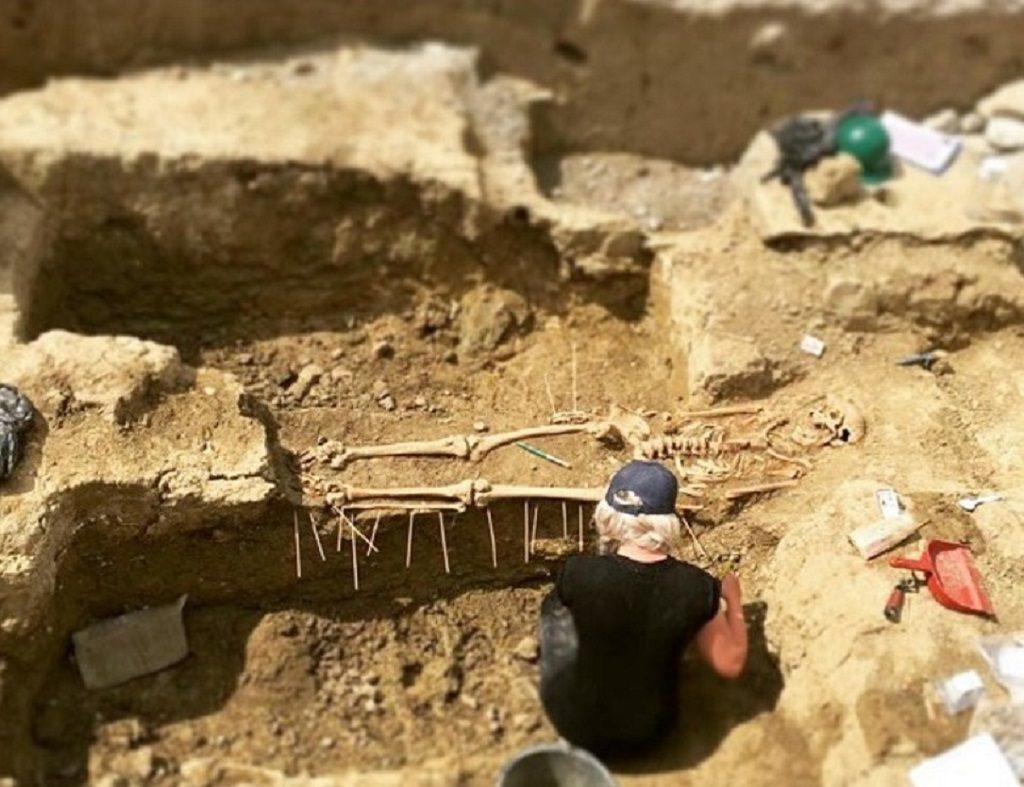Kat, Mairi and Sophie are all Historic Environment Scotland-funded PhD students based at the Scottish Universities Environmental Research Centre, part of the University of Glasgow.
Science is a key part of their work constructing new, improved chronologies of Scotland’s past. Here’s how these three students got into their archaeological science projects.
An Interest in Interdisciplinary Study – Kat
If I’m honest, when I began my studies archaeological science is not where I thought I would end up! At undergraduate level, I found that my interest lay in human remains and Geographic Information Systems (GIS). With my scientific interest piqued, I went on to do a Master’s degree in Forensic Archaeology and Anthropology.
I am currently researching prehistoric settlement development on the Orcadian Islands of Westray and Papa Westray.
This involves using a mix of radiocarbon dating, isotopic analysis and GIS mapping. The scientific methods, alongside traditional analysis, help to assess the age of events at an archaeological site. In turn, we gain a better understanding of things like diet and agriculture.
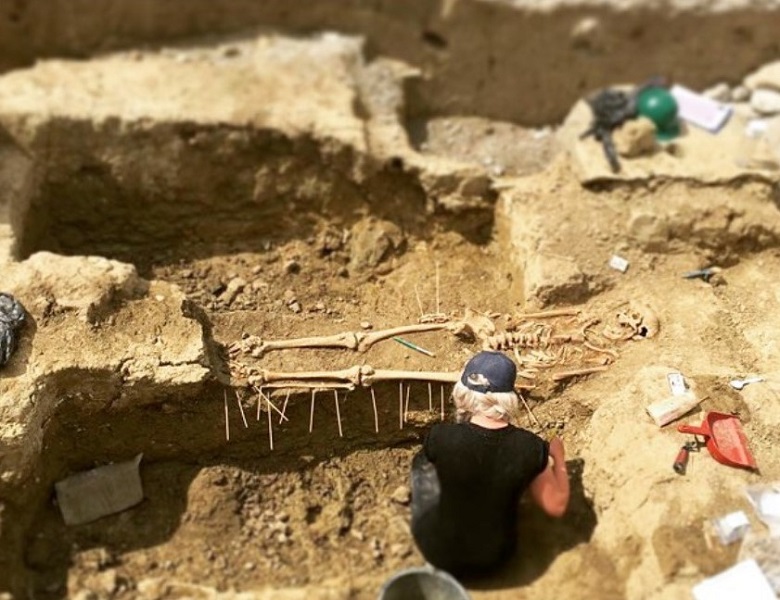
Kat’s first experience of oesto-archaeological fieldwork.
A Passion for Place – Mairi
I’ve always loved science – chemistry was my favourite subject at school! As I entered the world of archaeology, I found a continual delight with what science can tell us about the past.
My lecturers talked about what we can learn from pollen, soil make up and from the types of shells found on site. I was particularly drawn to osteology (the study of bones). I was amazed by how much someone’s remains reveal about their life.
As a result, I went on to do a Masters specialising in osteology. That simply made me want a career in the archaeological sciences even more!
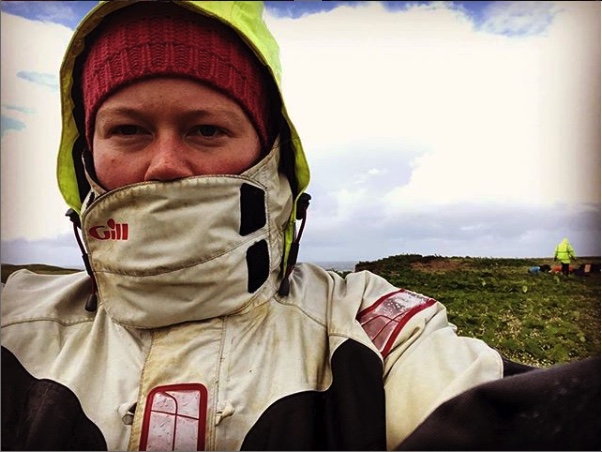
Excavating on sunny Lewis.
As someone who grew up in the Western Isles, I’ve always been fascinated by their archaeology. Their geography impacts the resident cultures there in ways not found in mainland Scotland.
Whilst the sea-going nature of the Vikings and the Lords of the Isles are well recorded, we know relatively little about the movements of early prehistoric west coast islanders.
Was there contact between the Outer Hebrides and the Inner Hebrides? How extensive was this contact? These are the sorts of questions that I hope to answer with the use of isotopes, radiocarbon dating and Bayesian analysis.
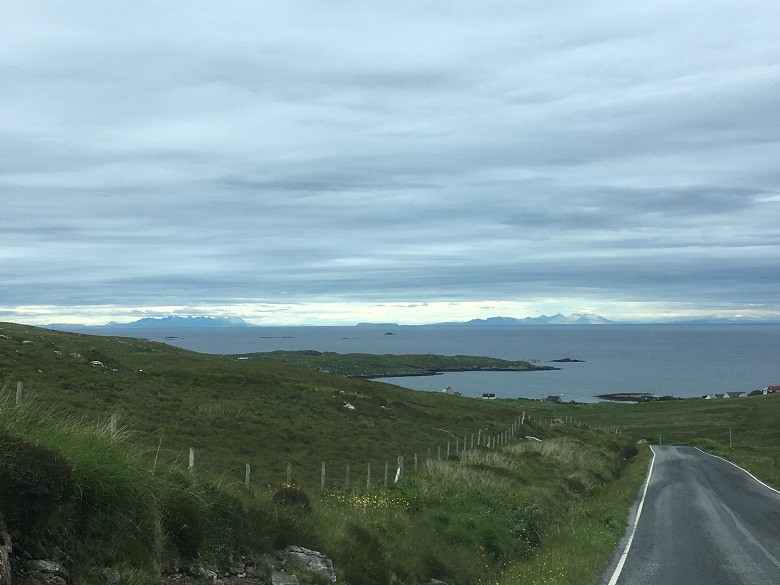
Skye, Rhum and Mull can frequently be seen from the Outer Hebrides
A Love of Landscapes – Sophie
I’ve always been interested in the more ‘science-y’ side of archaeology.
Archaeological scientists look at the types of pollen present in a landscape; studies of ancient DNA and isotopic analysis of human and animal bones.
From this, we can see how people in the past spent their time. We discover where they were from, how they moved around and even what they were eating.
I hadn’t really considered a career in heritage science until I started working with Digital Documentation and Heritage Science teams at HES’ Engine Shed. Seeing the scientists in action was inspiring. It was definitely a factor in deciding to apply for my PhD.

Most of my time so far has been spent working in the archives at John Sinclair House and Inverness Museum, tracking down samples like the charcoal I’m holding in this photo.
I’m now looking at how people were using upland landscapes in Scotland in the Bronze Age. Using Bayesian analysis of radiocarbon dates, I’m trying to get a better understanding of how people lived and worked on the windswept moors over 3000 years ago.
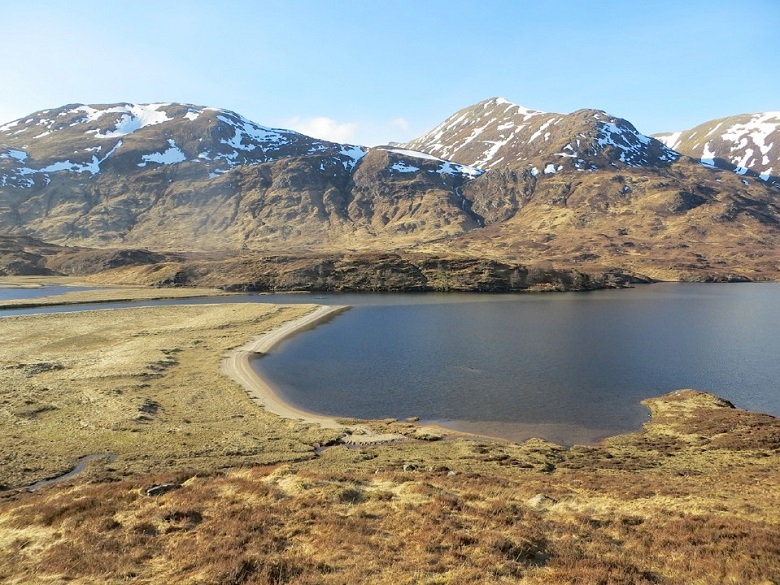
Landscapes like this, at Glen Affric, may look uninhabitable to us now, but have been settled and used by people for thousands of years.
Using scientific techniques, we can get closer to people in the past.
Find out more about Kat, Mairi and Sophie’s research on their blog. You can also find them on Twitter at @BayesAndBones.

